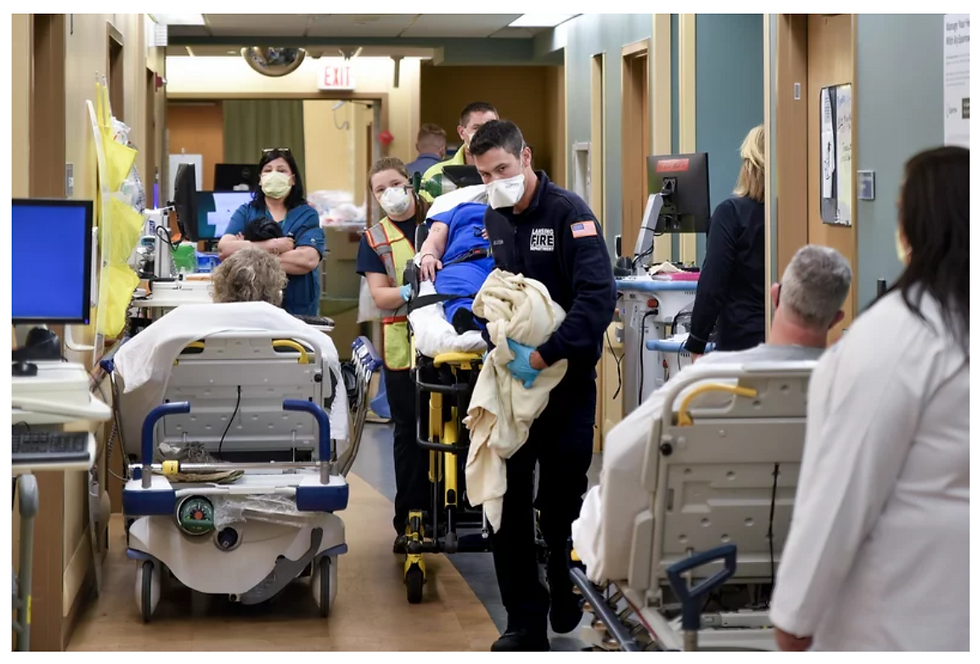In-Home Wound Care Programs: The Solution for COVID-19 and Beyond
- katherinepiette
- May 27, 2020
- 4 min read
Updated: Jan 29, 2021

For years, outpatient wound care clinics have dominated the landscape in the care of patients with recurring, chronic wounds, with more wound care and advanced product utilization being delivered at specialty clinics than any other single care setting. Now, however, the COVID-19 Pandemic calls into question the wisdom of having such a singular, hyper-focused, facility-based approach to wound care.
Eliminate, if only for the moment, that ambulatory wound care clinic programs are more expensive for payers. Even in the best of times, asking someone often in great pain, at risk for further trauma, and potential infection to come to a wound care clinic seems counter-intuitive. But, during these worst of times, patients and families are left without the necessary skills and critical support to care for wounds in the home.
Forward-thinking manufacturers and distributors of wound care products have long prepared for this growing utilization of treatments in the home. Such suppliers have increasingly partnered with Corstrata to combine our tech-enabled services with the effective utilization of advanced wound dressings and other treatment modalities to produce favorable clinical and financial outcomes. While wound care clinics utilize some of these same wound products, they also utilize high-cost treatments such as hyperbaric oxygen and tissue substitutes at the higher end of the cost spectrum. The formularies and modalities offered for in-home care programs are often less costly, yet can be equally as effective when delivered with evidence-based guidelines and adequate clinical expertise, including remote expertise, delivered remotely such as we provide here at Corstrata.
Noted wound care industry authority Rafael Mazuz of Diligence Wound Care Global recently released a compelling article on the impact of COVID-19 on Wound Care. The analysis of utilization data by Tissue Analytics indicates that U.S. Wound Care Clinic volume has been substantially reduced in the initial weeks of lockdowns thus far. While still too early to conclude how long this trend will last and what the full impact will be, it is likely driven by the significant risks for chronic wound patients associated with leaving their homes and potentially contracting COVID-19. As such, Mazuz discusses the benefits of deploying telehealth options for such vulnerable populations and favorably highlights Corstrata’s long-standing work in the field.
Yet, there has been recent debate as to whether advanced wound care should be considered an essential service during this COVID-19 Pandemic. https://www.podiatrytoday.com/blogged/how-podiatrists-can-navigate-shifting-model-wound-care-during-covid-19-pandemic
What? CMS is questioning whether wound care is essential? Corstrata has come to an interesting realization over the last six weeks: there is a broadscale, lack of understanding of the nature of wound patients in the healthcare industry, in part due to wounds not being a recognized medical specialty. Upon initially hearing the news, I assumed CMS meant there are alternatives to wound care clinics. However, we have yet to receive clarification on this announcement, so our depth of understanding is still uncertain.
We do know that Chronic Wounds are ticking time bombs. The physiology of these Wounds requires ongoing follow-up and care management. Not providing proper care for one of these patients, or doing so with inadequate knowledge and skill, is an issue of “life or limb,” literally.
Mazuz’s analysis of the Tissue Analytics data is compelling as it relates to the sharp reduction in Wound Care Clinic visits. These patients did not “magically improve” with the COVID-19 breakout. The question is how are they being managed in their home or facility?
Payers should be taking action! Medicare Advantage, Medicaid HMO, and Dual Eligible plans should be evaluating the care that their members with chronic wounds are receiving as well as the associated outcomes. This data exists in the claims databases. Repeat patients receiving more than one round of treatment in any given year from a Wound Care Clinic should be immediate targets for offering the, much overdue, Medical Home Services Model. The results are pre-emptive alternatives to ultimate hospitalizations.
How does this Medical Home Services model work for complex wound care patients?
TeleWound care, such as that provided by Corstrata, enrolls patients for routine followups.
Patients with recurring diabetic wounds are prime targets for routine check-in and targeted prevention.
Patients and families participate in their care by taking a photo of the wound in a free app and forwarding it to a wound expert for evaluation.
Mobile wound technology, such as Tissue Analytics, performs the function of analyzing the wound photo.
TeleWound services, augmented with best practice recommendations, including the use of advanced wound products that can be safely applied in the home, save unnecessary in-home nursing visits and money.
Primary Care Physicians are contacted with recommendations for approval.
Homecare providers serve the critical function of performing dressing changes and debridement when indicated.
Pre-episode and post-episode, Telehealth remains involved in patient education, prevention, and medical home coordination.
The function TeleWound Services plays is incredibly cost-effective and provides a viable option for caring for patients with chronic wounds. It serves as an incredible win for patients during this COVID-19 era, as well as in the post-pandemic era. Equally payers, physicians, and homecare all participate in elements of the win.
To learn more about how telehealth for wounds and ostomy can improve outcomes at a reduced cost (including at-risk/value-based payment models) for your patients, or to inquire about strategic partnerships and investment opportunities, please get in touch with Corstrata today!




Comments